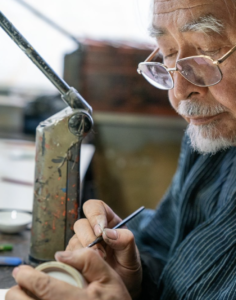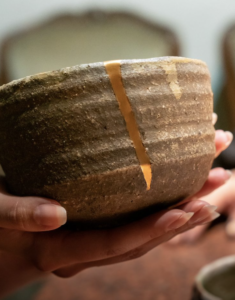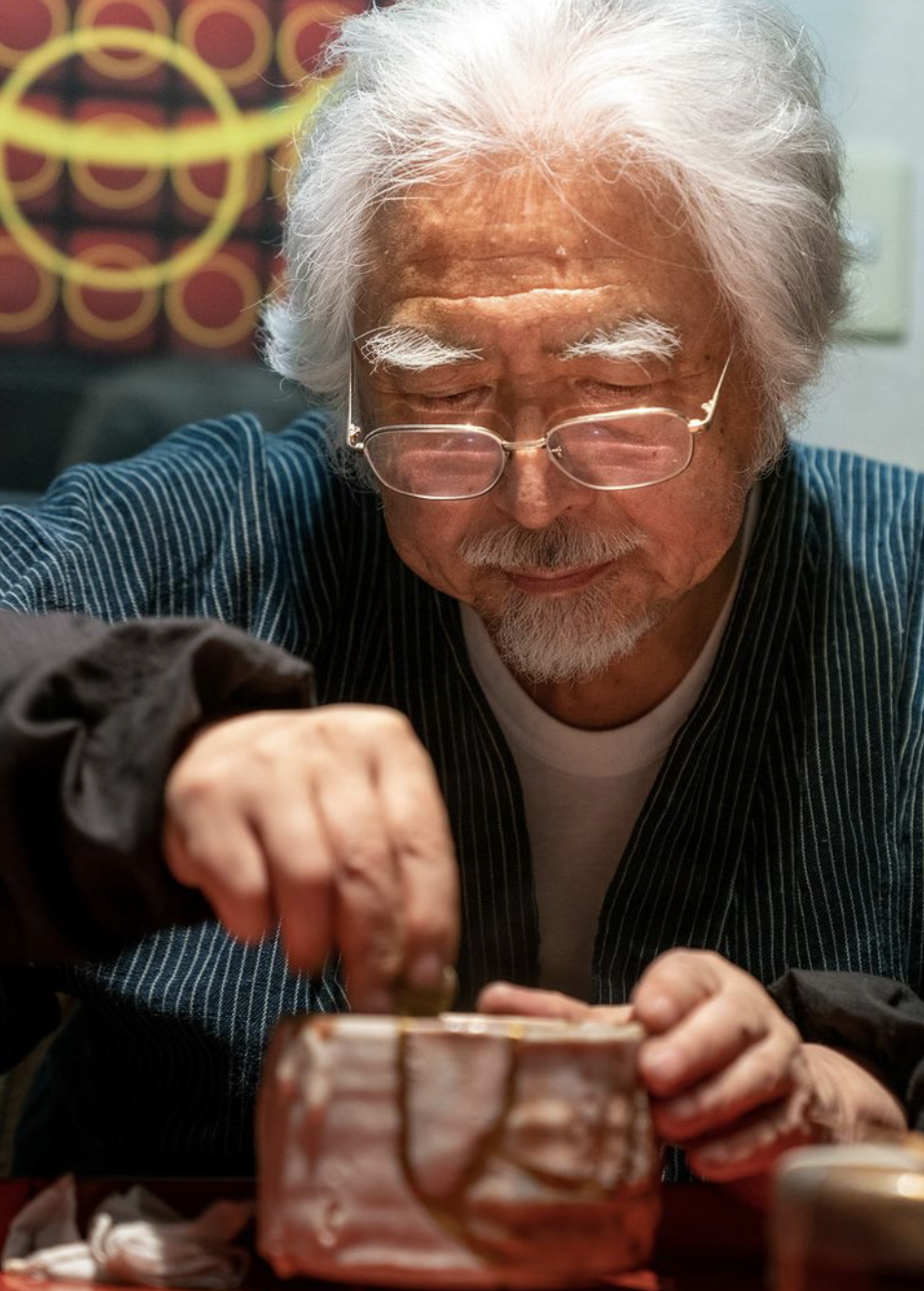 Kintsugi expresses the aesthetic sense of the philosophy of Wabi Sabi, that an object is beautiful precisely because it is simple and imperfect.🤕 Kintsugi originated in samurai society during the reign of Oda Nobunaga in the 16th century.
Kintsugi expresses the aesthetic sense of the philosophy of Wabi Sabi, that an object is beautiful precisely because it is simple and imperfect.🤕 Kintsugi originated in samurai society during the reign of Oda Nobunaga in the 16th century.
When a treasured tea bowl was broken, it was repaired using the maki-e technique, and this is how kintsugi was introduced into Japanese tea ceremony. Kintsugi is rooted in the spirit of the samurai, who believed that scars were not something to be hidden, but something to be proud of in life. Maki-e, a traditional Japanese craft, is a decorative technique in which black Urushi (Japanese lacquer) is applied, allowed to dry, polished flat, coated with E-Urushi, sprinkled with pure gold powder, and then allowed to dry once more. The real kintsugi is a restoration using the maki-e technique.
Kintsugi can be thought of as an early form of sustainability, where broken ceramics were repaired and made beautiful rather than simply being throw away.🤗
If you take part in a kintsugi experience at Showzi Tsukamoto’s workshop at Kintsugi Souke, you can take home a piece of porcelain beautifully restored with pure gold maki-e (maki-e), a memory you will treasure forever.

📍Toshima, Tokyo
@tokyotokyooldmeetsnew
🚃 Ochiai-minami-nagasaki Station or Higashi-Nagasaki Station
🚅Save money traveling in Tokyo and around Tokyo using JR East’s discount passes @jreast_us
📸 Tag #tokyoandaroundtokyo for the chance to have your photos of Tokyo and areas around Tokyo featured!
#tokyoandaroundtokyo #japantravel#japan #discoverjapan #visitjapan#japantrip
#sdgs #sdgsjapan #sustainable#sustainabletourism #unknownjapan#jreast #jrpass #visittokyo#tokyotrip #tokyo #kintsugi #金継ぎ#東京 #soketsukamoto #goldart#wabisabi #japanesecrafts#japaneseheritage #gold #craftsman#workshop

